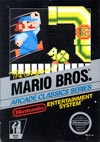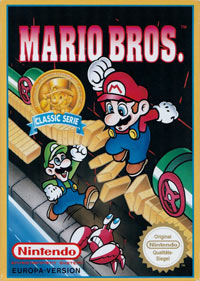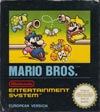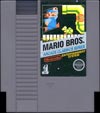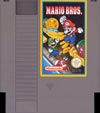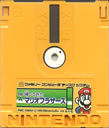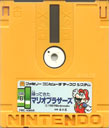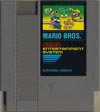From Arcades to the Famicom
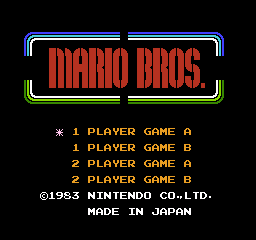
Title screen (NES/Famicom)
Nintendo's 1983 arcade game, Mario Bros., was adapted for home release on the Famicom shortly after its debut. When Nintendo expanded its home console operations outside of Japan, Mario Bros. was one of the first games released for the NES in each territory. The game has been adapted for the Famicom and NES multiple times, and some of these releases are fairly hard to track down. Let's take a look at all of the different versions of this classic game on Nintendo's 8-bit hardware.
The Famicom port of Mario Bros. was released on September 9, 1983, not even two full months after the release of the arcade game. It has several differences from its arcade counterpart.
- New title screen music was added, where the arcade title animation was silent.
- Slipice makes a sound when destroyed, with the arcade version again silent.
- Players are designated "I" and "II" (the numerals on the Famicom controllers) instead of "Mario" and "Luigi."
- Mario's hat changed from blue in the arcade to the more familiar red, while his shoes changed to blue instead of orange. Luigi was given a totally different color scheme of white overalls and hat with a green shirt and shoes (which would also be used in Super Mario Bros.) instead of his arcade ensemble of green overalls and hat, dark brown shirt, and indigo shoes. Both had brown hair in the arcade version, replaced by their shirt colors in the Famicom version.
- Mario and Luigi both make distinctive sounds when they run, provided by analog sound generators on the arcade board. This method was not easy to reproduce on the Famicom, so their running sounds were changed to musical arpeggios.
- In the arcade version, stages are numbered using cards and tally marks, so Phases 1 through 4 gain a tally mark, with the first numbered card being for Phase 5. This repeats for Phases 10, 15, and 20, with the card for Phase 25 and later showing a red "KO" instead.
- In the arcade version, the first bonus stage has a time limit of 20 seconds, and all subsequent bonus stages reduce their time limit from 20 to 15 seconds. In the Famicom version, the counter starts at 20 seconds but immediately jumps to 15 seconds when play begins on these stages.
Like most Nintendo products of the early '80s, Mario Bros. for Famicom features options for "Game A" (for beginners) and "Game B" (for experts). In Game A, enemy movement speed is somewhat slower than the arcade version on its standard settings, while Game B increases enemy movement speed and frequency of fireballs.
Given the early state of Famicom development at the time (the Famicom itself was released one day before Mario Bros. came out in arcades), it has some shortcomings as well:
- The sprites for Sidesteppers and Fighterflies flicker noticeably, with their top halves only half drawn and rapidly flipped back and forth on alternating frames to complete the image.
- The enemies are drawn to look comparatively very thin, with fireballs, Shellcreepers and Slipice most notably appearing much smaller than in the arcade.
- Shellcreepers are missing their pre-recovery animation of leaving their shells.
- Widespread use of colors like dark blue and magenta for some enemy variations make for a much more garish palette in the home version than the arcade.
- The POW Block doesn't alternate color from blue to yellow as in the arcade, and the pipes are missing their valve handles.
- There is less vertical space used in the home version (especially around the top pipes) due to TV overscan considerations.
- The Famicom version is also missing the flashy title animation of the arcade, where Mario and Luigi jump and flip the letters of the logo to make it readable.
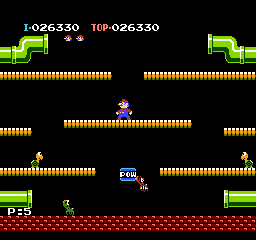
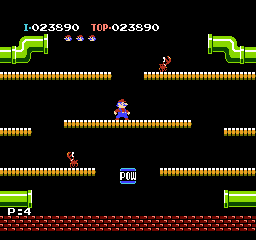
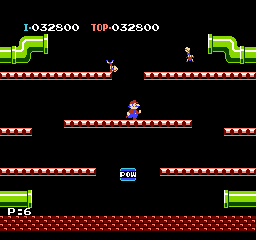
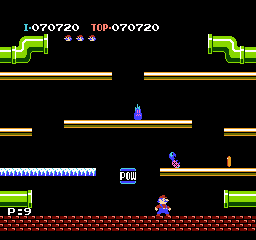
The Famicom version is also missing levels compared to the arcade. The most notable omission is the lack of bonus stages with invisible platforms (starting at Phase 15 in the American version or 16 in the Japanese version) and the lack of falling icicles in stages starting with Phase 16(USA)/17(JP). The Japanese arcade version has an additional level at Phase 2 that is not present in the American arcade release, which is why everything after that point is numbered differently.
Comparison screenshots from the arcade version:
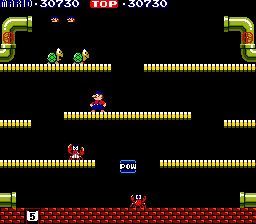
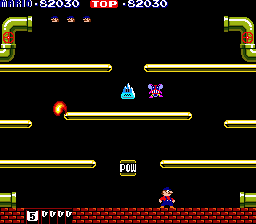
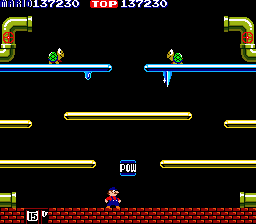
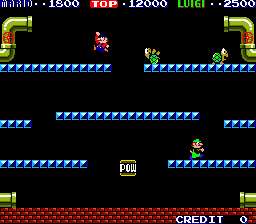
Regional Differences: NTSC vs. PAL
The home version of Mario Bros. was released in the USA in June 1986, about eight months after the release of the NES. Starting in September 1986, Mario Bros. launched with the NES in European (PAL-B) markets. The PAL-A version, for the United Kingdom, Australia, and Italy, wouldn't see a release until 1987[1].
The American release of the game is the same as the Japanese version from 1983, since both countries used the NTSC television standard. The initial European release shared the same code as the NTSC versions, meaning that its gameplay and music speed were 17% slower in Europe due to PAL's 50Hz timing.
In August of 1991, Nintendo's then-newly established Germany-based subsidiary, Nintendo of Europe, released a new version of Mario Bros., again only compatible with "European Version" (PAL-B) NES systems. This release had no graphical changes, but the timing of its gameplay was sped up to compensate for the 50Hz refresh rate of PAL television. However, the music and sound effects were not adjusted, leaving them still slower and lower-pitched than the Japanese and American releases.
The NTSC and Nintendo of Europe versions have different attract demos. Each version of the demo seems to issue the same commands to Mario and Luigi, but probably due to the changed game timing of the new 50Hz-adjusted version, the action plays out in a different manner. The timing of the Nintendo of Europe version is also interesting because it becomes more and more offset with each repetition, causing a different sequence of events to occur each time, until eventually it resets to the way it was on the first cycle.
Kaettekita Mario Bros.
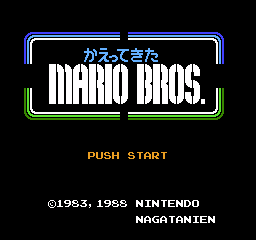
Title screen
In November of 1988, Nintendo released a new version of the game on the Famicom Disk System, called Kaettekita Mario Bros. ("Return of Mario Bros.") with improved graphics and gameplay. This version of the game was only available for from Disk Writer kiosks and could not be bought at retail. It was released as part of a promotional tie-in with food company Nagatanien, who at the time produced Mario-branded food seasonings.
Kaettekita Mario Bros. has wider enemy sprites that resemble the arcade originals much more closely and don't flicker. It also features new title screen music that takes advantage of the Disk System's expanded sound capabilities, and removes the "Game A" and "Game B" difficulty options.
This version of the game restores the stage order of the Japanese arcade version, with the first bonus stage occurring at Phase 4 and the addition of invisible platforms at Phase 16 and icicles at Phase 17. The bonus stages have now been modified so each one has a time limit of 20 seconds. Judging from the behavior of the timer in the original Famicom version, it's not clear if this was intentional or an oversight.
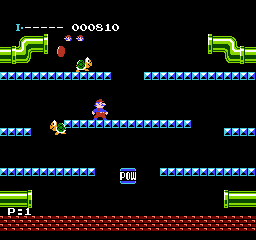
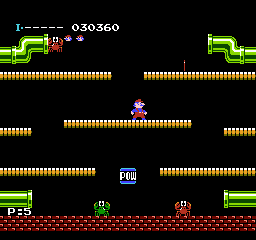
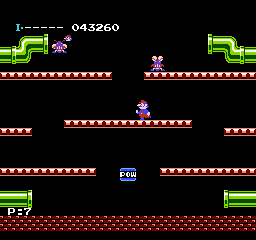
Taking advantage of the disk-based format's saving capabilities, this version of the game allows the player to enter name, age, and gender for player 1 and 2, which allows the players' names to appear next to their scores, as well as opening up possibilities for personalized food advertisements on the loading screen.
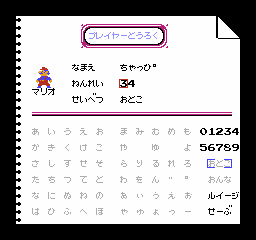
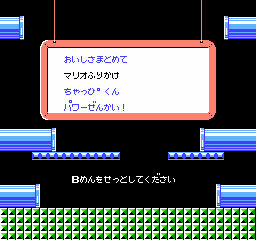
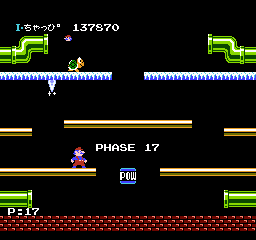
Upon starting a game, the player is greeted with an advertisement for one of Nagatanien's products, including:
- Nagatanien Gomoku Chahan (combination fried rice)
- Ochazuke Nori (seaweed-seasoned green tea over rice)
- Super Mario Bros. 3 Furikake (seasoning or fish flakes), with a note about Mario curry coming soon as well.
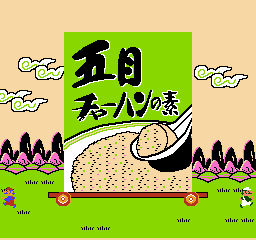
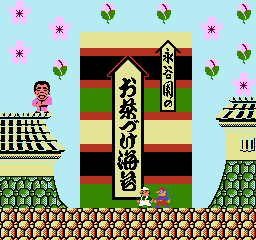
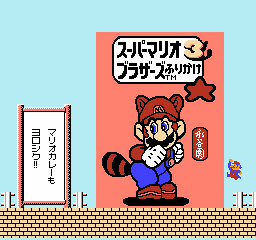
Kaettekita Mario Bros. has two modes, "Original Mario Brothers" and "Nagatanien World." It also allows you to register your name and view notices regarding a promotional contest, which was a drawing that could be entered from November 30, 1988, to May 31, 1989.
Original Mario Brothers mode features notable improvements in graphics and controls over the previous home version. Enemy colors now much more closely resemble their arcade colors, and you can now control your jump direction in midair.
Nagatanien World keeps these gameplay improvements and adds a slot machine that appears after your first Game Over, allowing you to spin for more lives to continue playing. In this mode, upon earning 100,000 points, you are greeted with a screen giving you a password to send in on a postcard in order to enter for a chance to win one of 450 Super Mario Bros. 3 playing card sets (150 people from each drawing). Upon earning 200,000 points, you get a similar password, allowing you to enter for a chance to win one of 150 copies of either the newly-released Super Mario Bros. 3 or "Nintendo's newest game cartridge," selectable by the winner (50 people from each drawing). In addition, 2,400 people (800 from each drawing) would receive a Super Mario Bros. 3 keychain. Each entry in the drawing required sending in a stamp cut from the bottom of the game's instruction sheet. The contest ran from November 30, 1988, to May 31, 1989.
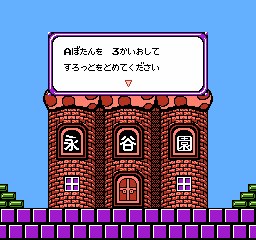
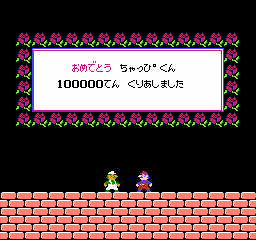
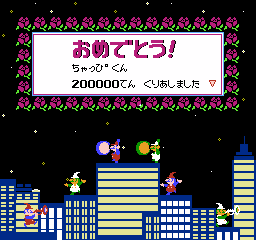
Mario Bros. (Classic Serie)
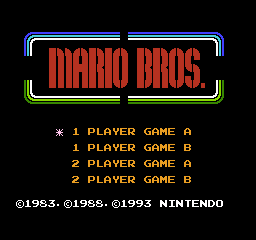
Title screen
In 1993, a few years after the advent of the Super NES, Nintendo released another version of Mario Bros. in Europe. This new version was sold in versions compatible with each European region, with a PAL-B release from Nintendo of Europe featuring German text on the box and manual, and an Italian PAL-A release (without the "Classic Serie" emblem) by toy importer Linea GiG S.p.A., Nintendo's distributor in Italy throughout the 1990s.
This is an adaptation of Kaettekita Mario Bros., foregoing all food- and contest-related content and adding new enemy introduction screens that mimic the ones found in the arcade version. This version also retains the second phase from the Japanese version, making the first bonus stage appear at Phase 4.
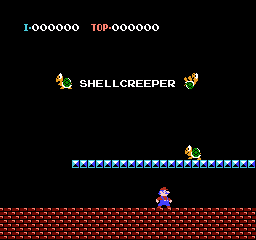
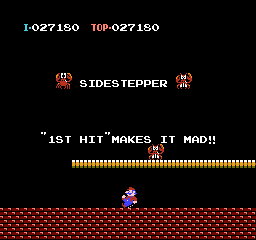
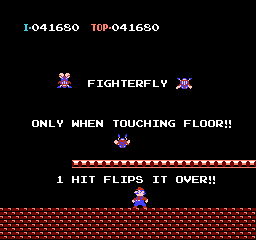
This version is the closest yet to the arcade, with a few exceptions:
- Jump direction can still be controlled in midair.
- The Shellcreeper intro lacks the "demonstration" text and "bonus coin" portion from the arcade, and the Slipice introduction lacks the text "ARE YOU READY FOR THE NEXT PHASE ?"
- Introductions feature a brick floor not seen in the arcade, with an extra brick border on the Slipice intro.
- Enemy speed has increased compared to Kaettekita Mario Bros., with most enemies, especially Fighterflies, now exceeding the speed of their arcade equivalents.
- "Game A" and "Game B" options have returned.
- Enemy intro screens do not display your remaining lives.
- In another holdover from Kaettekita Mario Bros. rules, bonus stage time limits are all set to 20 seconds.
- Game Over music now has one wrong note. The third note in the jingle's bassline incorrectly moves upward instead of continuing a descending arpeggio.
Comparison screenshots from the arcade version:
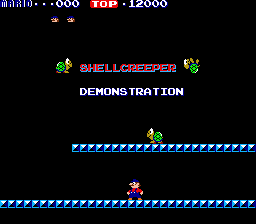
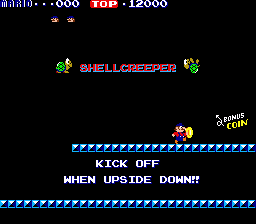
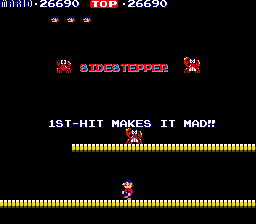
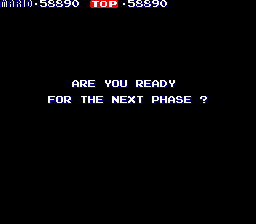
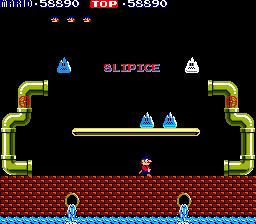
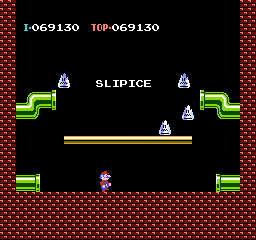
Both PAL versions have slower tempos for Mario's walking sound and for the timer in the bonus stages, even though the music speed and pitch were corrected for the Classic Serie release. The coin rotation speed in bonus stages and the post-bonus stage coin tally are also slower than their NTSC and arcade counterparts.
A Decade of Home Versions
From the perspective of someone who grew up with an NES in the USA, it might be surprising to know that Nintendo kept adapting and tweaking the home 8-bit ports of a single game for 10 years, or that the final cartridge version was only released to certain areas of Europe long after attention had shifted to the next generation of game consoles. However, it's nice to think that at one time, some division of Nintendo cared enough to keep refining the game to attempt to bring it closer to arcade perfection.
Image Gallery
Written by Chupperson.

